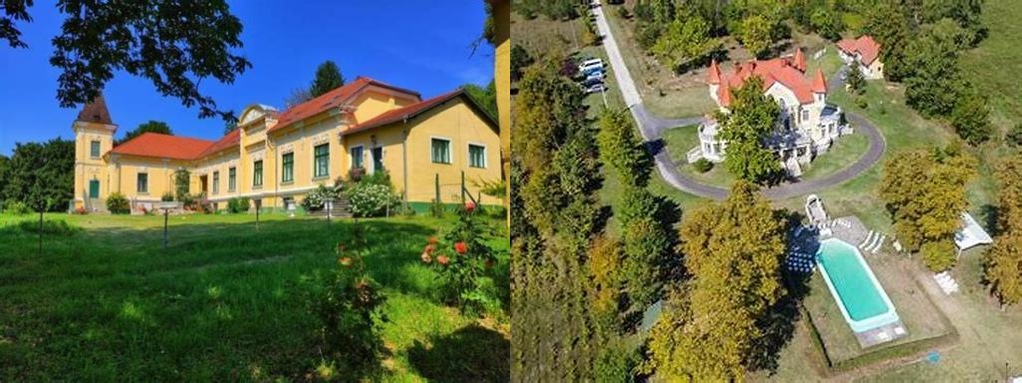
Brzarar-kastély sits quietly on the edge of Mogyorósbánya, its silhouette rising above the tree-line like the kind of secret you share in a whisper. Unlike the brash castles of fame and battle, here you won’t find selfie-snapping crowds or gift shops ringing with cash registers. Instead, you get age-worn stones, moody light, and a gentle hush—an invitation, almost, to walk slowly and imagine who might have wandered these corridors before you. The castle isn’t huge, but every room seems to carry traces of both quiet ostentation and hidden stories, waiting for any visitor with a sense of curiosity and a willingness to listen.
The castle’s history is a colorful patchwork, embroidered by both triumph and quiet retreats. Built in 1812 by the somewhat mysterious Count Miklós Brzarar, the estate was supposed to act as a summer refuge from the politics spiraling through the courts of Buda and Pest. The Count, known among his contemporaries as both a shrewd landowner and an eccentric amateur botanist, insisted on building his home from local stone and using laborers from the nearby village. As you wander through the main hall, it’s easy to picture him here—towering stacks of ledgers and seed catalogues crowding the mahogany tables, sunlight peeking through the old, wavy glass. There’s an air of practicality blended with a surprisingly passionate attention to small details: the discreet motifs on the doors, the hand-forged hinges, the original floors that still groan with every footstep. It’s said he would personally invite schoolchildren for botany lessons through the castle gardens, and you can almost hear a faint echo of laughter in the breeze outside.
Over the decades, Brzarar-kastély has drifted in and out of history’s spotlight. When war rolled across Hungary in the mid-19th century, it became a kind of temporary sanctuary for locals fleeing unrest. The scars of the past are subtle: if you run your fingers along the back wall of the southern tower, you might notice the uneven stonework, patched quickly in 1849 after a small fire during the Revolution. Small, unsentimental details like this are everywhere—a chipped stair, an old child’s toy rescued from beneath a loose floorboard and now displayed in the minor salon, a faded ink stain on the landing. In the 1920s, the castle bounced back as a lively center for artists and composers hosted by the last Brzarar family heir, a bohemian pianist named Kata Brzarar. Her salon is still set with an old upright piano, said to have witnessed the birth of more than one folk song now woven into regional tradition.
Exploring the grounds is an experience in itself. Mogyorósbánya sits amid a peaceful sweep of hills, and the castle gardens—which blend structured formality with less-tidy corners gone wild—offer plenty of places to wander, rest, and think. Formal terraces slowly transition into meadows thick with hazelnut and wildflowers. Some sections of the old glasshouses still stand, their windows dappled with moss and sunlight. If you visit in spring, the scent of distant lilacs hangs in the air; in autumn, wild apples pepper the ground beneath gnarled trees that outdate the castle itself. There’s a restorative, unrushed rhythm to a walk here—a friendly kind of quiet, broken only by birds, occasional deer, and, sometimes, the soft drone of bees. There’s never any hurry, and it’s easy to imagine that Count Miklós planned it that way, a man whose only deadlines were the seasons themselves.
Unlike better-known castles, Brzarar-kastély rarely preens for the history books. There are no suits of armor, no staged medieval banquets. Instead, you get stories whispered by stone: sisters who eloped under the moon in feathered hats, Hungarian poets nursing heartbreak in rose gardens, local families bringing baskets of mushrooms to the backdoor for the cook’s latest stew. Even today, if you glance at the guestbook (it’s a battered notebook, not a digital tablet), there are pencil sketches, pressed leaves, and thank-you notes in a half-dozen languages. Some guests come for the solitude, others for the thrill of discovery, and a few simply to spend an afternoon in the gentle echo of history that this tucked-away place provides.
A visit to Brzarar-kastély is not about dramatic towers or fairytale legends. Here, the magic lies in old doors closing quietly behind you, in rooms that have been lived in, and in gardens where time moves just a little more slowly. If your idea of exploring the past includes looking for traces of ordinary dreams and untold stories, then maybe—just maybe—this corner of Mogyorósbánya is exactly where you’re meant to be.





